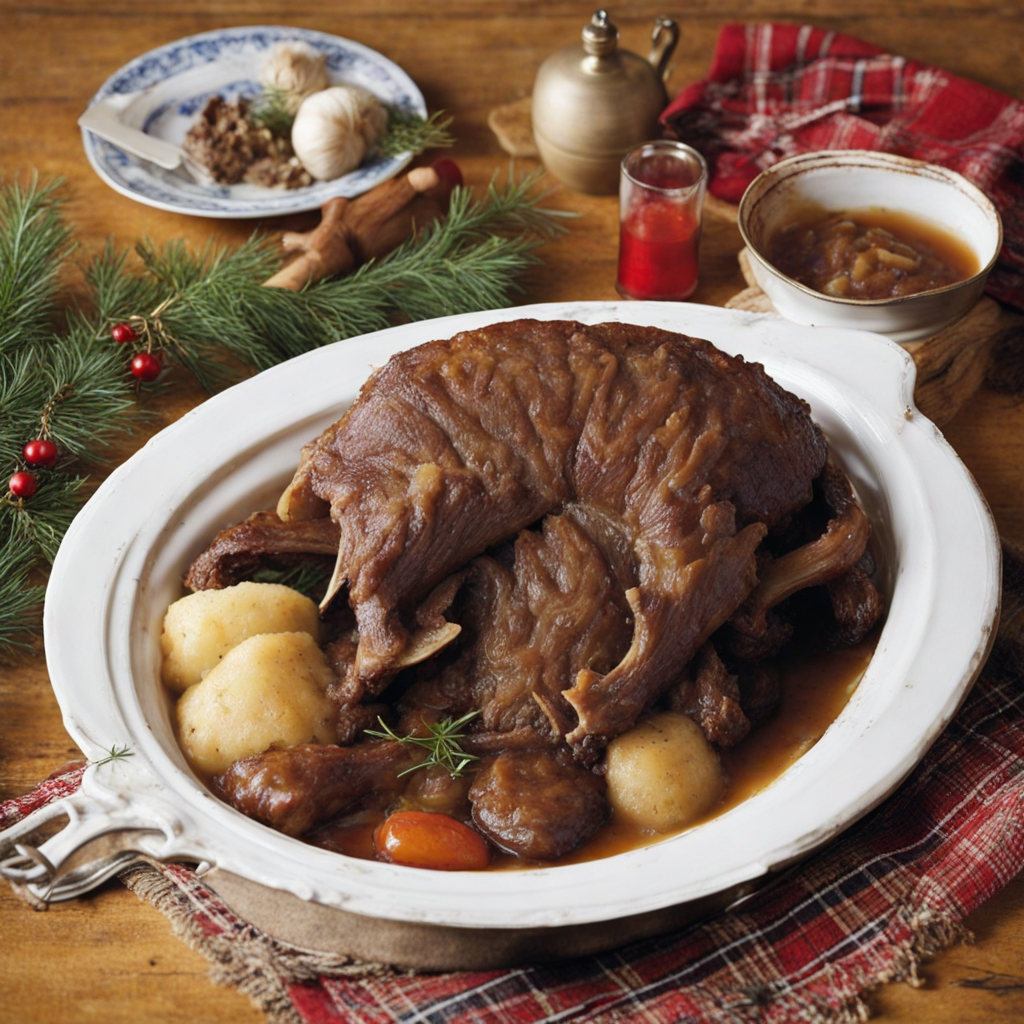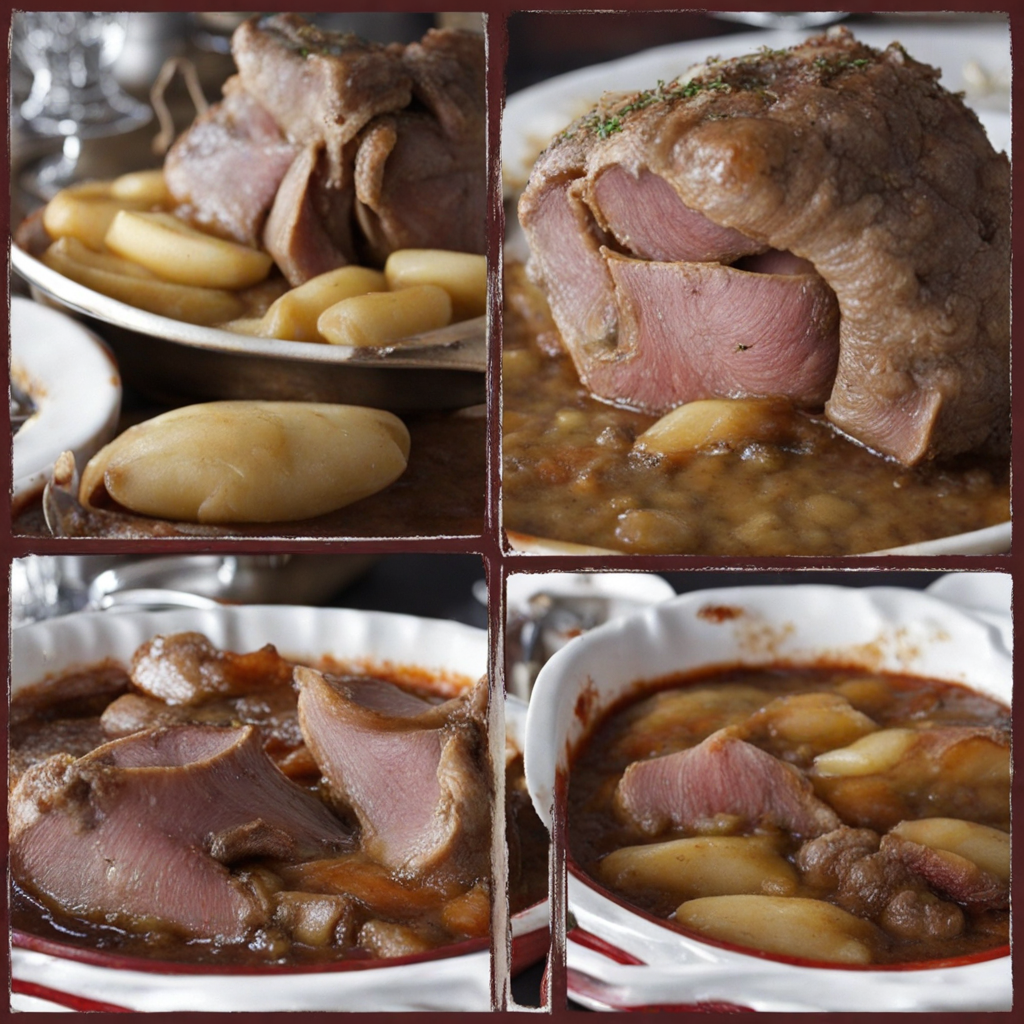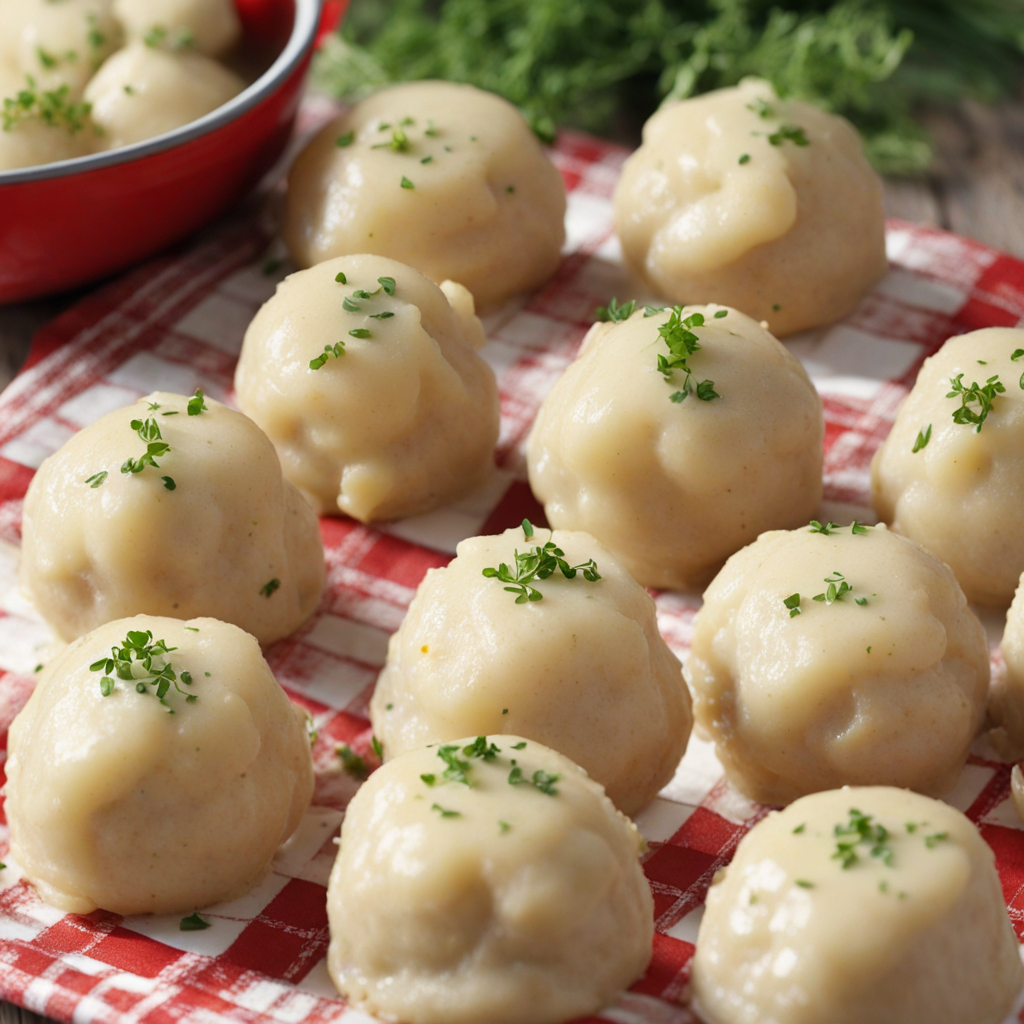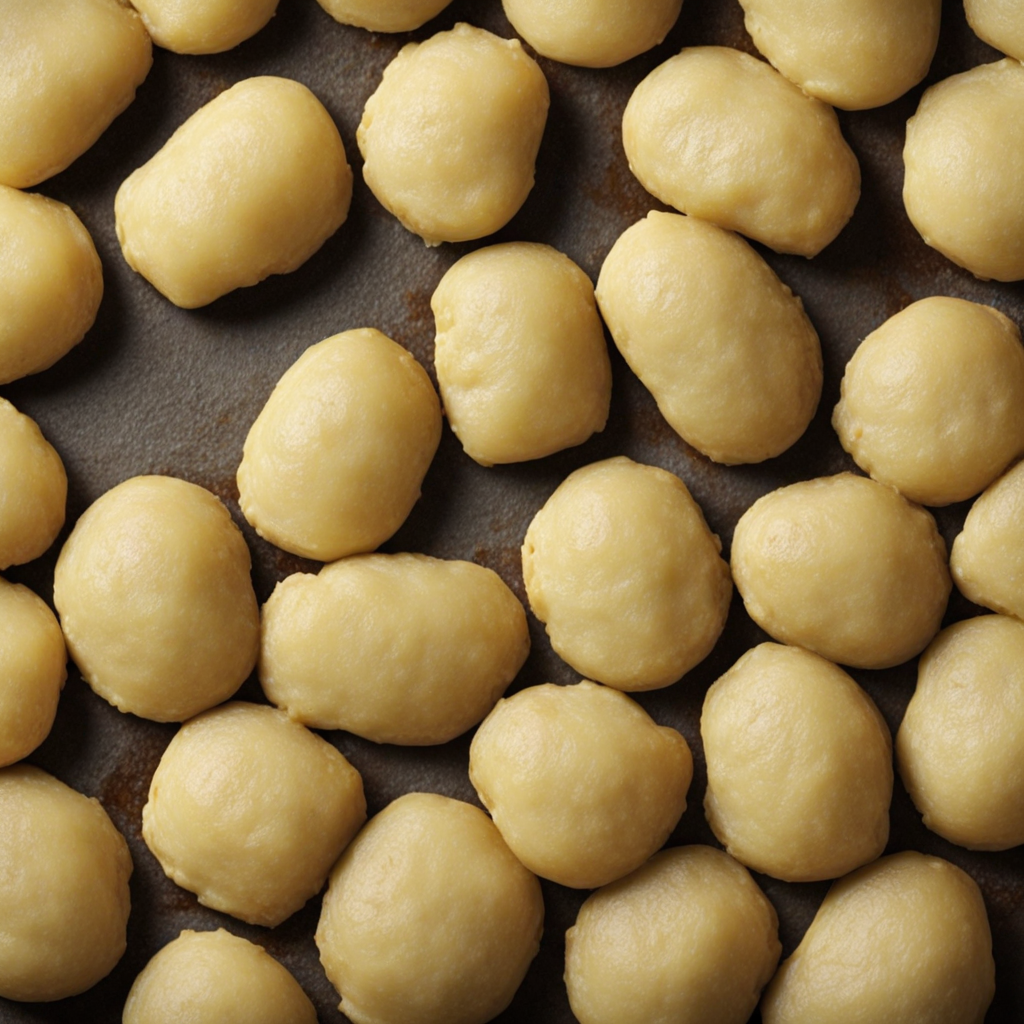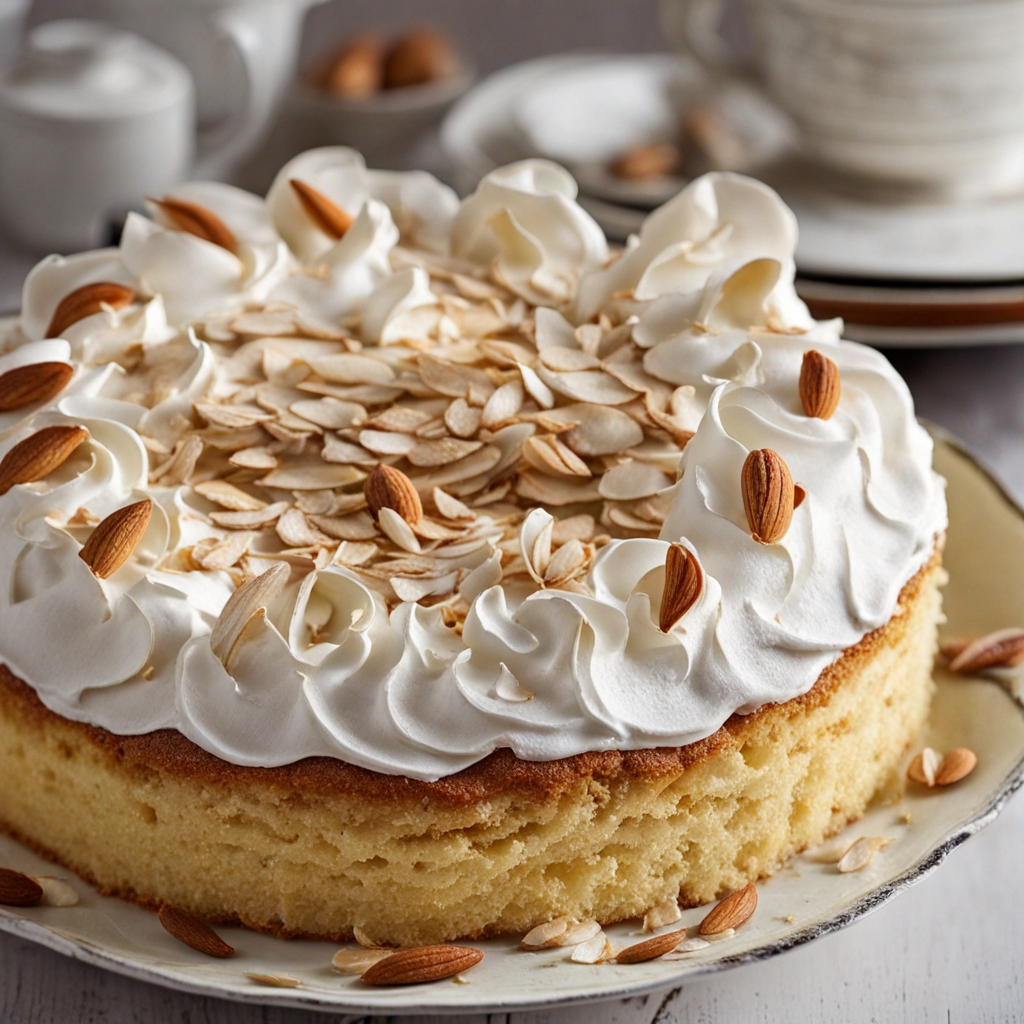Smalahove
Smalahove is a traditional Norwegian dish that embodies the rustic charm and rich culinary heritage of Norway. This unique delicacy consists of a sheep's head, which is typically smoked or dried before being steamed or boiled. The dish is often served during the festive season, particularly around Christmas, and is a notable part of the Western Norwegian cuisine. The presentation of Smalahove is striking, as the whole sheep's head, complete with eyes, ears, and wool, is served on a platter, showcasing the farm-to-table ethos deeply rooted in Norwegian culture. When it comes to taste, Smalahove offers a complex and bold flavor profile. The meat is tender and rich, with a slight smokiness that permeates each bite. The cheeks and tongue are particularly prized for their succulent texture, while the gelatinous parts around the head provide an unctuous quality that melts in your mouth. It's often accompanied by sides such as rutabaga and potatoes, which help balance the dish's richness and enhance the overall experience. The combination of flavors creates a hearty and satisfying meal, perfect for those looking to explore something new and adventurous. Smalahove is more than just a meal; it is an experience that connects diners to the traditions and history of Norwegian gastronomy. Eating Smalahove is often a communal activity, with friends and family gathering to share this bold dish, making it a centerpiece of celebration and storytelling. For those willing to break away from conventional dining and embrace the unique tastes of the world, Smalahove offers a memorable culinary adventure that highlights the flavors of Norway and the importance of its agricultural practices.
How It Became This Dish
The History and Cultural Significance of Smalahove in Norway Smalahove, a traditional Norwegian dish, is both a culinary curiosity and a cultural artifact, steeped in the history and rugged lifestyle of Norway. This unique dish consists of a sheep's head, which is typically smoked or steamed and served with potatoes, rutabaga, and sometimes a rich gravy. While it might seem unusual by contemporary standards, Smalahove embodies centuries of tradition and reflects the resourcefulness of rural Norwegians. #### Origins: A Culinary Tradition Born of Necessity The roots of Smalahove can be traced back to the rural communities of Norway, particularly in the western and southern regions, where sheep farming was prevalent. As early as the Viking Age, Norwegians relied heavily on sheep for their meat, wool, and milk. The practice of utilizing every part of the animal was not merely a culinary choice; it was a necessity driven by the harsh climate and the need to survive long winters. The dish likely gained prominence during the 18th century, a time when Norway was still largely agrarian. Farmers would slaughter their sheep in the autumn, preserving the meat for the cold months ahead. The heads, often considered the least desirable cuts, were not discarded but instead transformed into a dish that would become a symbol of culinary ingenuity. Smalahove was commonly prepared during the Christmas season, a time when families would gather and celebrate the bounty of the land. The dish became emblematic of feasting, signifying abundance and the successful harvest. The preparation methods varied by region, but the commonality was the use of preserved techniques such as smoking, which not only added flavor but also extended the shelf life of the meat. #### Cultural Significance: A Symbol of Community and Tradition Smalahove is more than just food; it is a reflection of Norwegian culture and community. The dish is often associated with festive occasions and communal gatherings, serving as a centerpiece during celebrations. Its preparation and consumption have become rituals that honor the heritage of Norwegian farming communities. In many parts of Norway, particularly in Voss and the surrounding fjords, the tradition of serving Smalahove has been revived in recent years, often accompanied by folk music and traditional dances. This revival is not merely about food; it is a way to reconnect with cultural roots and promote local heritage. The dish has become a point of pride for many Norwegians, showcasing their ability to turn humble ingredients into a gastronomic experience. Moreover, Smalahove has garnered attention beyond Norwegian borders, attracting adventurous food lovers and culinary tourists seeking authentic local experiences. Festivals celebrating traditional Norwegian cuisine often feature Smalahove, allowing both locals and visitors to partake in this unique culinary heritage. #### Development Over Time: From Practicality to Gastronomy As Norway transitioned from an agrarian society to a more urbanized and industrialized nation in the 19th and 20th centuries, the role of Smalahove evolved. With increased access to diverse food sources and changing dietary preferences, the dish became less common in everyday diets. However, it never vanished entirely; instead, it transformed from a staple food into a delicacy associated with special occasions. The mid-20th century saw a resurgence in interest in traditional foods, spurred by a growing movement to preserve culinary heritage in the face of globalization. Smalahove found itself at the forefront of this movement, celebrated for its authenticity and the stories it told about Norway's rural past. Chefs began to experiment with the dish, presenting it in new and innovative ways while still respecting its traditional roots. Modern interpretations of Smalahove often emphasize quality and presentation, with chefs focusing on sourcing local, organic ingredients to accompany the dish. The head is typically prepared with care, showcasing the culinary skills involved in its preparation. This evolution reflects broader trends in the culinary world, where there is a renewed focus on sustainability, farm-to-table practices, and the importance of heritage foods. #### Preparing Smalahove: A Culinary Art The preparation of Smalahove is a labor-intensive process that requires skill and patience. Traditionally, the sheep's head is first cleaned and then either smoked or salted to preserve it. Once ready, it is typically steamed until tender, allowing the flavors to meld. The cooking process is crucial, as undercooked Smalahove can be tough and unpalatable. Serving Smalahove is an event in itself. The head is often presented whole, garnished with herbs and accompanied by traditional side dishes like boiled potatoes and rutabaga, which are staples in Norwegian cuisine. The dish is typically enjoyed with a splash of aquavit, a traditional Scandinavian spirit, highlighting the communal aspect of the meal. In recent years, culinary festivals and local restaurants have embraced Smalahove, offering it as a part of tasting menus that showcase the best of Norwegian cuisine. These modern interpretations often aim to educate diners about the dish's history and significance, elevating it from a simple meal to an experience rich in storytelling. #### Conclusion: A Legacy of Resilience and Ingenuity Smalahove stands as a testament to Norway’s rich culinary heritage, embodying qualities of resilience, resourcefulness, and community. From its humble beginnings as a dish born of necessity to its current status as a celebrated culinary treasure, Smalahove encapsulates the spirit of Norwegian culture. As the world continues to evolve and culinary practices diverge, Smalahove remains a symbol of tradition and identity for many Norwegians. Its ongoing popularity serves as a reminder of the importance of preserving cultural heritage through food, ensuring that future generations will continue to enjoy and appreciate the stories and traditions that each dish conveys. In a world increasingly dominated by fast food and convenience, Smalahove invites us to slow down, savor our meals, and connect with the past.
You may like
Discover local flavors from Norway


